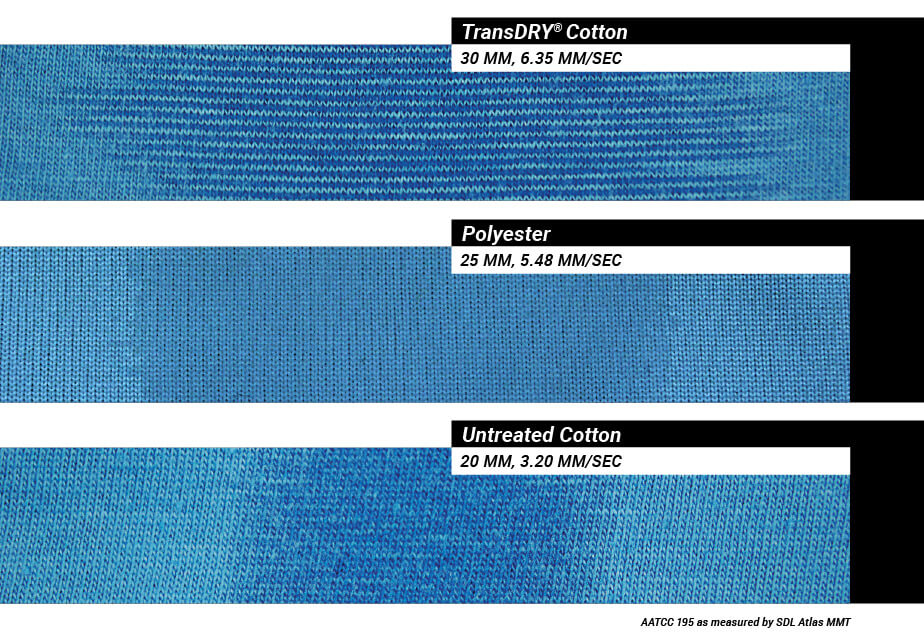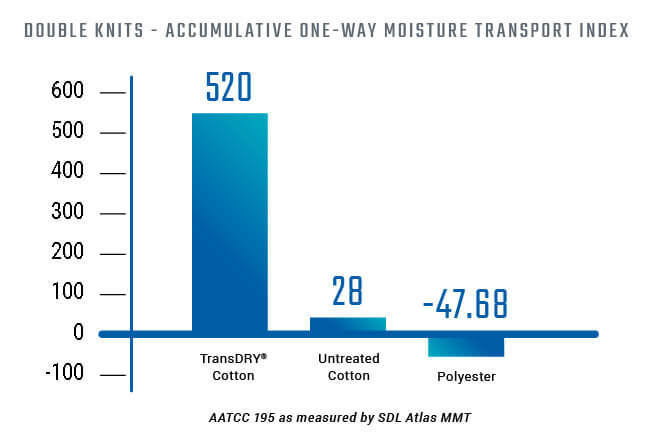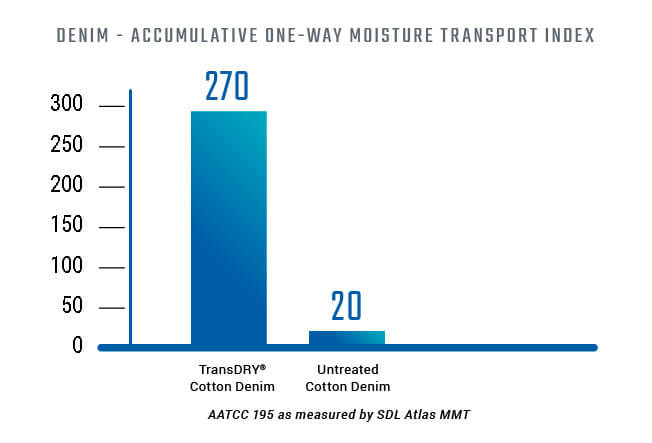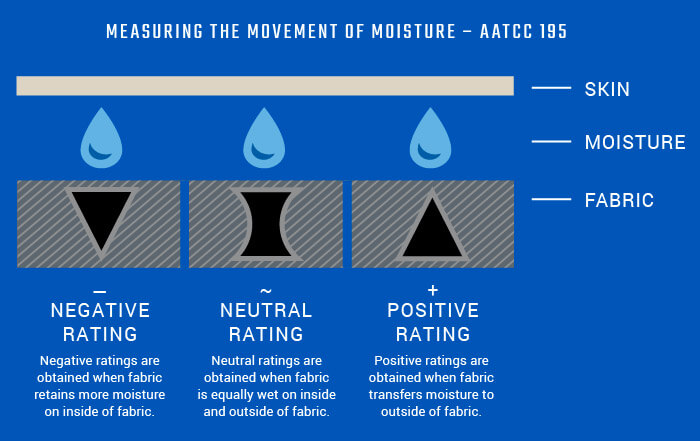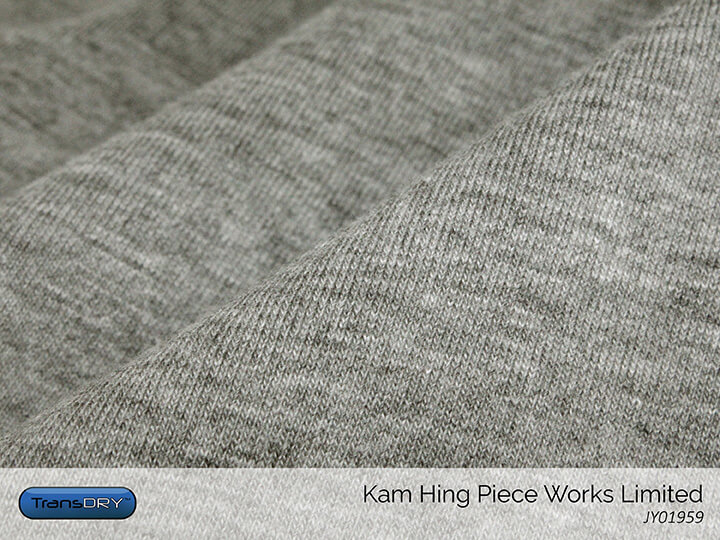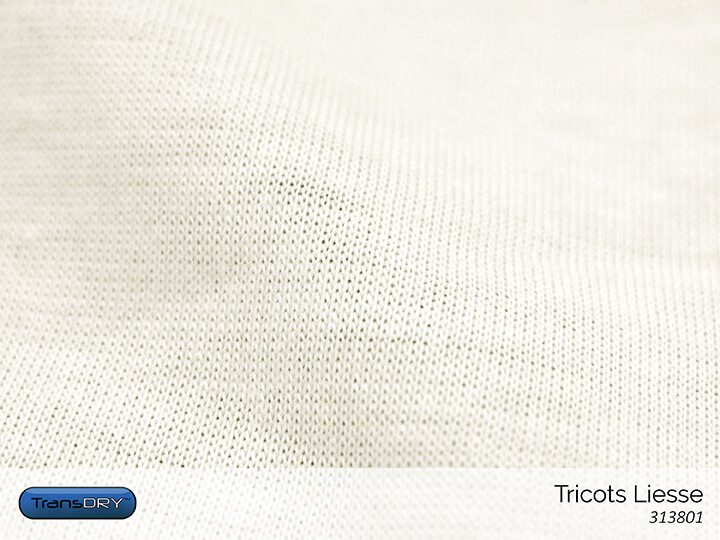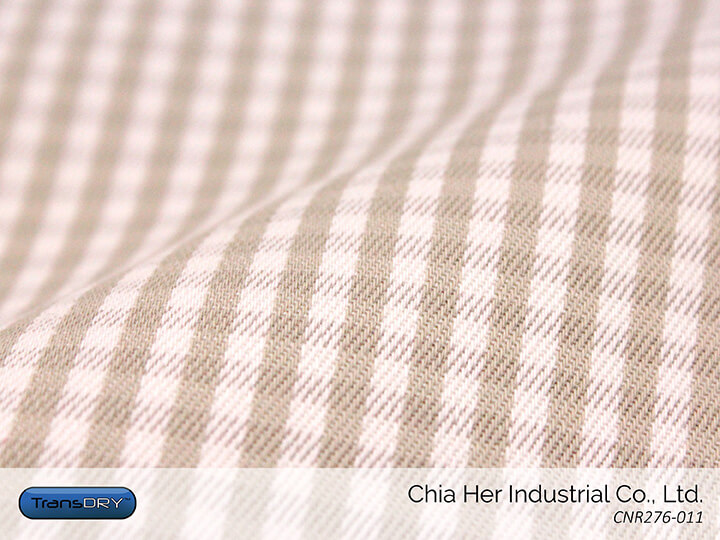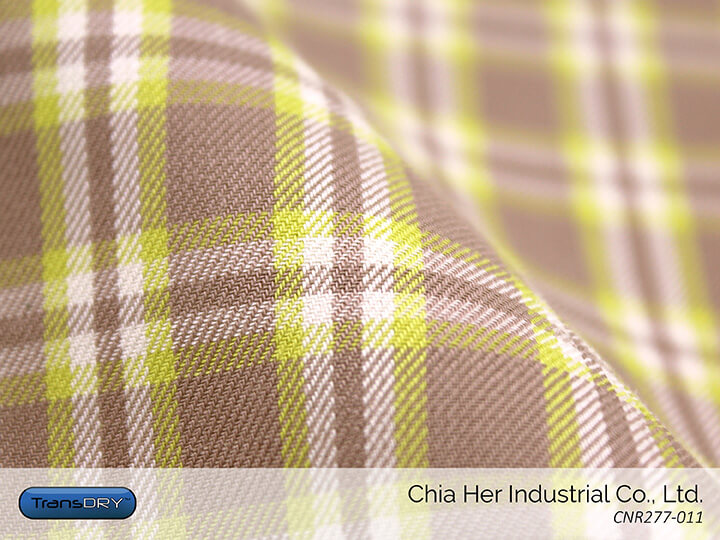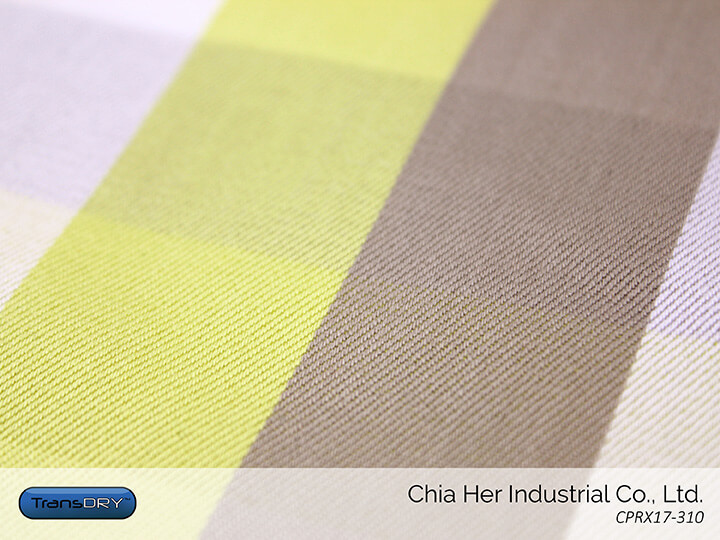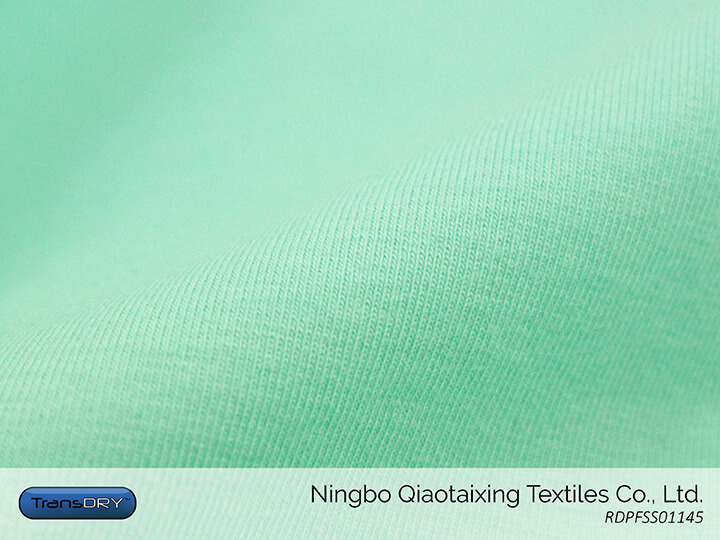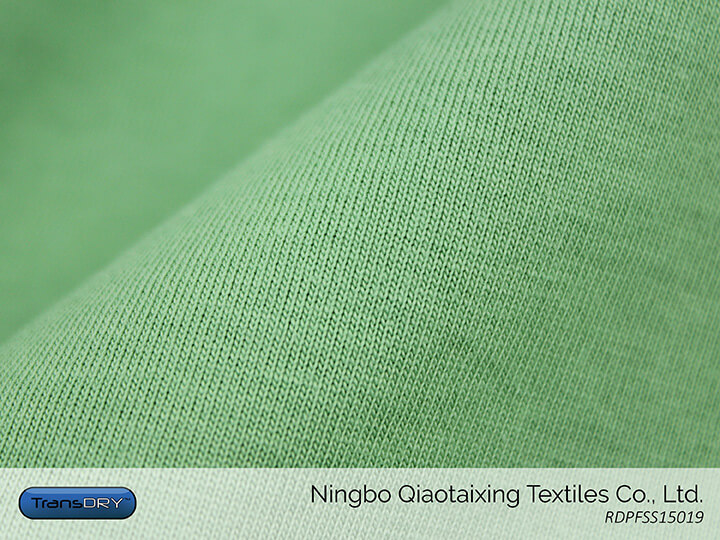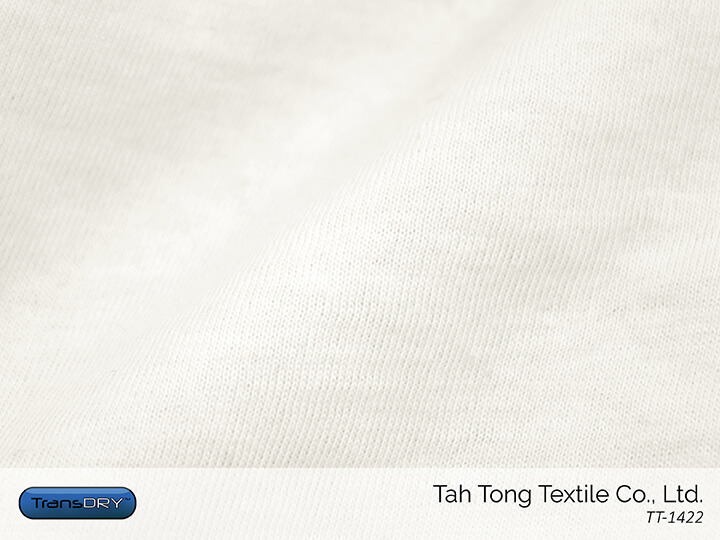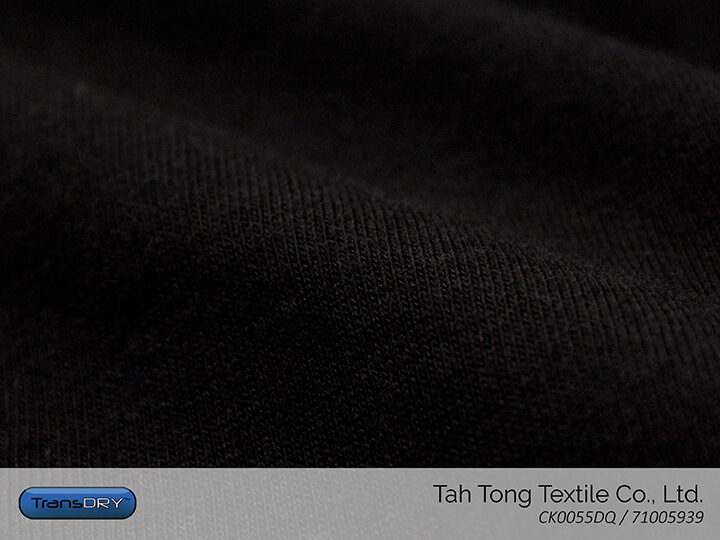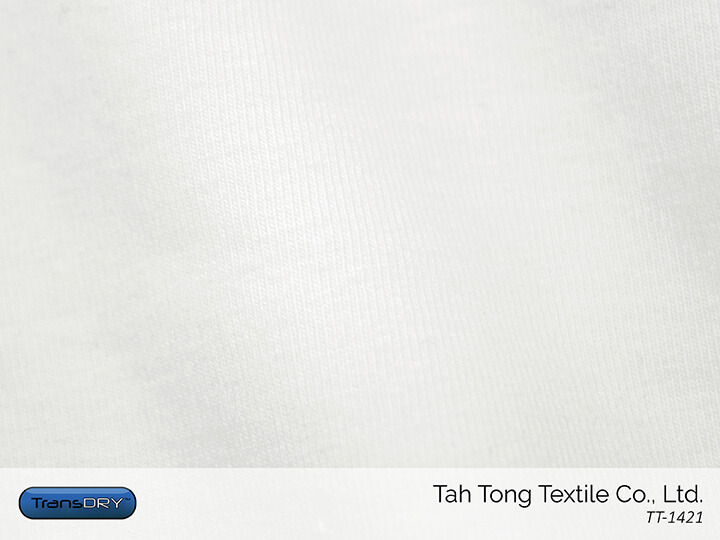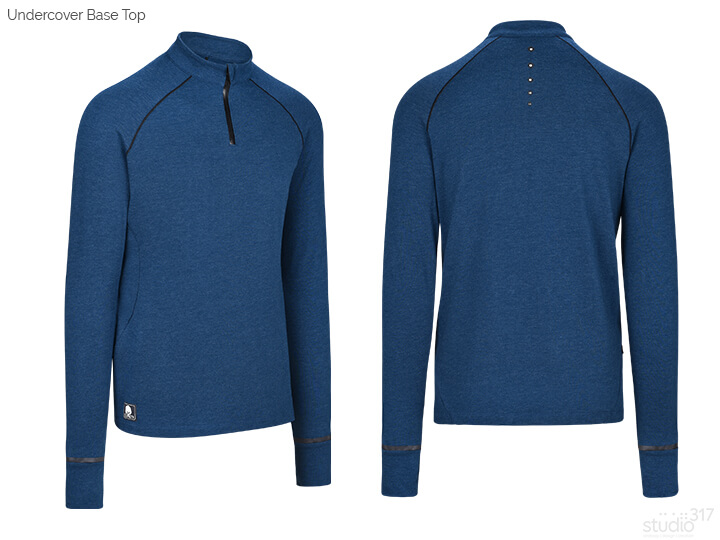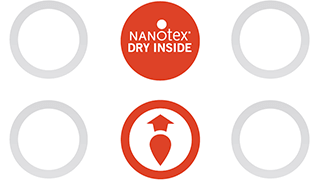TransDRY® Technology
TRUE PERFORMANCE, NOT MARKETING HYPE.
Designed to keep you cooler and dry faster, TransDRY® technology combines the comfort of cotton with moisture-wicking performance that rivals any competitive fiber in the market. So check that one off the list on race day. Cotton activewear is one item you won’t have to worry about performing—cotton is as technically advanced as any fiber in the activewear market.
The best part is, after the medals are won, cotton will wash clean of odors3 and be ready to go for the next challenge you face.
What Consumers Are Saying:
- 57% prefer cotton-rich activewear.
- 60% seek out moisture management features in activewear.
- 61% describe cotton activewear as breathable.
- 45% willing to purchase cotton activewear that wicks moisture and dries faster.
Moisture management performance that goes beyond synthetic fibers, while maintaining the natural comfort and softness of cotton.
- Reduces cotton’s absorbent capacity
- Moves moisture away from the body
- Keeps you cooler and drier
- Washes clean of odors
- Versatile across all knit and woven product categories

ENGINEERED TO PERFORM.
What is TransDRY® Technology?
TransDRY® technology for cotton is a patented, high-performance moisture management application that allows fabrics to wick and spread perspiration as well as, or better than, most high-tech synthetic fabrics. You get the comfort and softness of your favorite cotton t-shirt along with wicking and fast-drying performance.
Cotton yarns are treated with a special process to make them water repellent. The repellent yarns are blended with the right amount of absorbent cotton yarns to create channels for the movement of moisture. As a result, TransDRY® fabrics do not become over-saturated during exercise and have a lower overall absorbent capacity that mimics that of polyester and nylon.
Since the TransDRY® technology starts at the yarn stage, the possibilities to engineer moisture management fabrics are endless. The technology provides effective moisture management performance in a variety of product categories.
What’s more, the superior performance gets better throughout the life of the garment.
- Bottomweight fabrics
- Denim
- Home Textiles
- Seamless and circular knits
- Socks
- Sweaters
- Woven shirting
MOVEMENT OF MOISTURE WITH TransDRY® TECHNOLOGY.
Fabrics can be constructed to move moisture horizontally, vertically, or from the skin side to the outside of a fabric better than top-performing synthetic fabrics.
Example: Ponte Di Roma Cotton Fabric
Sweat is absorbed and moves quickly through the fabric.
Moisture vapor is released away from the body and into the atmosphere.
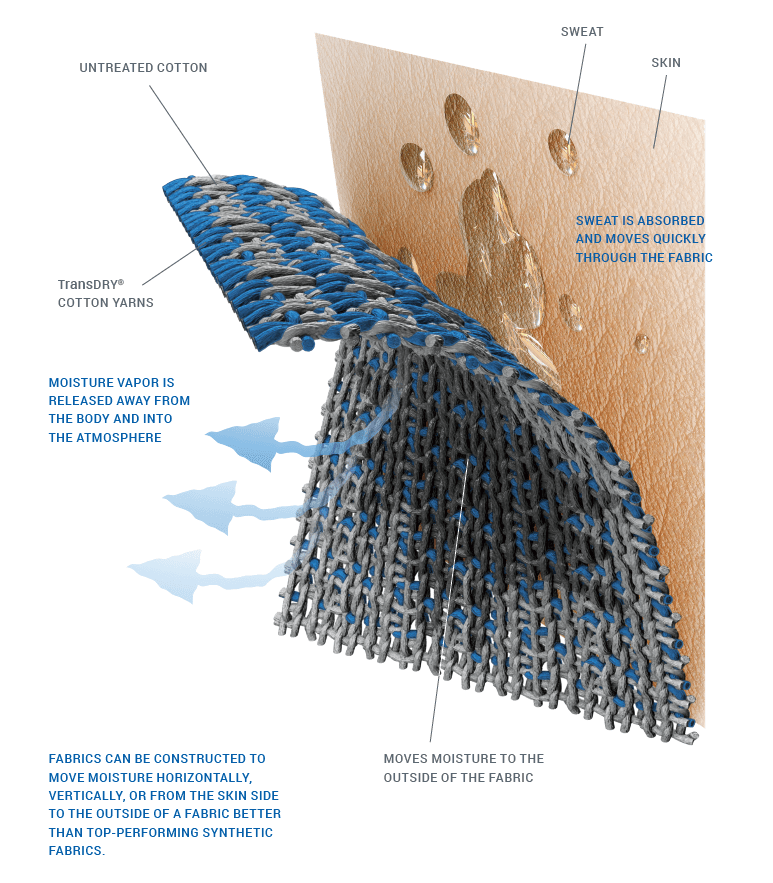
TRANSFERS MOISTURE, DRIES FASTER.
Many synthetic fabrics become over-saturated and retain moisture next to the skin, causing a wet, clammy sensation during exercise. TransDRY® fabrics can be constructed to move moisture from the inside of the garment to the outside, in both horizontal and vertical directions depending on fabric construction. This movement of moisture can be quantified using industry standardized test methods.
STAY COOL, NO SWEAT.
Traditional cotton fabrics absorb moisture rapidly and can quickly become saturated retaining as much as 20-40% more moisture than synthetic fabrics. However, cotton fabrics treated with TransDRY® technology redefine what we normally think about cotton fabrics becoming so wet. Cotton actually can dry faster than or as fast as competitors in the market—by absorbing less moisture and spreading it at a faster rate, allowing it to evaporate quickly.
Dry Time Explained
- The unique construction of absorbent and repellent yarns in TransDRY® fabrics reduces the overall absorbent capacity of the fabric.
- Channels are created that allow for greater movement and spread of moisture. The spread over a larger surface area allows for quicker evaporation.
- The quicker evaporation of sweat, coupled with the natural breathability of cotton, does two things. It keeps the wearer cooler and it keeps the wearer drier.
- TransDRY® technology allows fabrics to dry faster. Because TransDRY® is flexible across many product categories, dry time may vary based on formulation, fabric construction, and finishing process. But don’t worry, it’s durable throughout the lifetime of the garment.
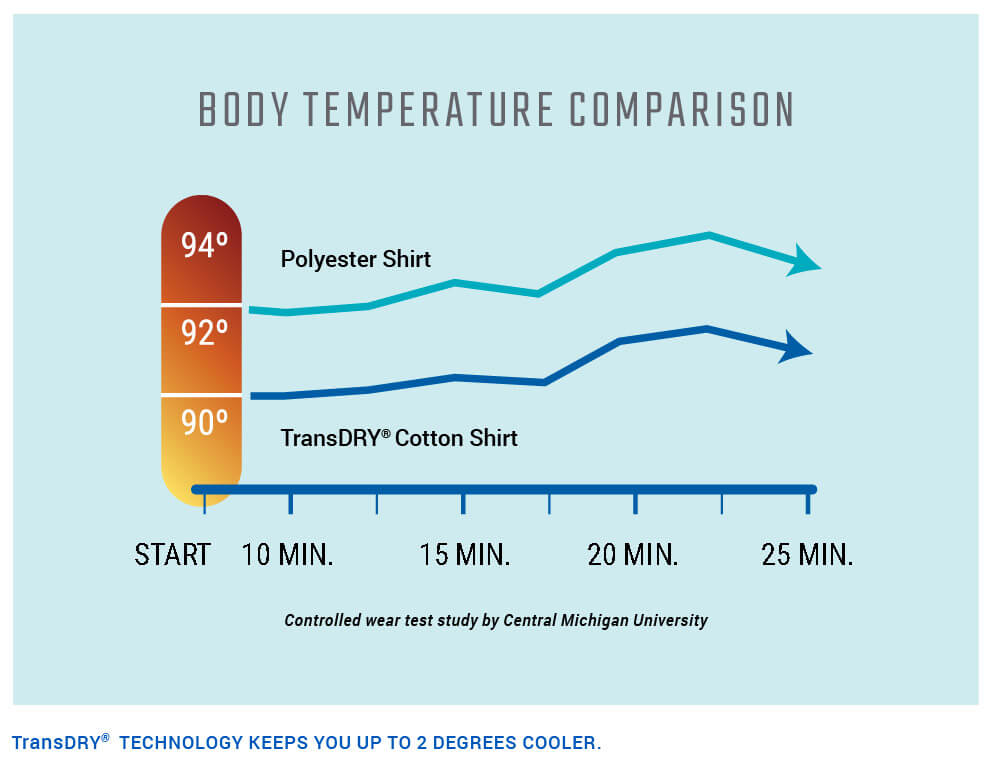

ENHANCED PROTECTION.
Now you can take moisture management one step further. TransDRY® technology can be combined with other chemical and mechanical technologies to achieve the ultimate active garment for all climates and sports.
Antimicrobial
Sweat is odorless, but combined with textiles, it creates an environment for odor-causing bacteria to grow. While research shows cotton washes clean from odors compared to synthetics, TransDRY® technology is compatible with antimicrobial technologies for an extra layer of protection. Applied at various stages, these products include yarns embedded with or topical treatments of recycled silver salts and topical treatments that combine silver, copper, and zinc.
UV Blocker
TransDRY® fabrics treated with a UV blocker perform similar to sunscreen, protecting from harmful Ultraviolet (UV) rays and preventing long-term damage from too much exposure. The UV blocker technology is applied at the fabric stage and can be combined with the dye step. The technology has been proven to last through multiple home launderings. Combined with TransDRY® technology, wearers can enjoy the comfort of wicking properties and protection from the sun.
Ventilating
TransDRY® technology is designed to keep you cool. But if you like a little more breeze, cotton fabrics can also be engineered to offer ventilation. TransDRY® knit fabrics can be constructed using dissolvable yarns or through fabric construction by intentionally skipping stitches to create ventilating pockets in the fabric. TransDRY® woven fabrics can be designed to ventilate through open weave structures, such as a Leno weave. Lasering technology is also an option to achieve ventilation.
Insulating
In many outdoor conditions, athletes need warmth and protection from the elements with moisture-wicking performance. Cotton fabrics, such as a single knit jacquard blister, can be uniquely engineered to increase loft and trap air, significantly improving the overall insulating capacity of cotton. Coupled with TransDRY® technology, these cotton fabrics offer a warm and dry microclimate to enhance performance.
NATURAL PERFORMANCE.
Confidence in Cotton
Performance is only one aspect to consider when making fiber decisions for activewear products. The impact on the environment is important too.
Cotton is a natural fiber produced directly from a plant by Mother Nature herself, not from a barrel of oil like other competitors in the market.4 The natural cotton fiber biodegrades in soil and wastewater at a much faster rate than polyester and is considered the safest choice for the environment.1,5 The real challenge is the microplastic pollution on the environment especially rivers, lakes, and oceans.6
Choosing the right performance fiber for your activewear lets your consumers focus on the beauty surrounding them, not what they are wearing on the trail.
Clean Chemistry
It is common for moisture management chemistries and finishes to contain fluorinated compounds in order to repel moisture. The finish formulas often contain perfluorooctanoic acid, or PFOA. Issues surrounding PFOA have been investigated by the U.S. Environmental Protection Agency (EPA).7 Standard perfluorinated molecules contain 8-carbon chain structures (C8) that do not break down quickly in the environment and there has been an industry-wide effort to find alternatives.
TransDRY® technology provides two options: a C6 finish that contains a shorter carbon chain structure and a fluorocarbon-free finish. Performance is not sacrificed with these two alternatives—moisture management testing standards are still able to be met while providing a more environmentally-friendly solution.
74% of consumers say cotton activewear is most sustainable, compared to only 13% who say the same for polyester and nylon activewear.
Cotton degrades 99% more than recycled polyester after 84 days in a compost environment.5
Cotton degrades 95% more than polyester after 250 days in wastewater.6
TransDRY®cotton is 97% biobased certified by the USDA BioPreferred® Program.

DOUBLE DUTY.
Cotton Incorporated’s dual technology options are a combination of our top performance finishes that offer superior quality and protection. The TransDRY® technology can be combined with our TOUGH COTTON™ technology to provide abrasion resistance, durability, and strength while simultaneously supplying the extra moisture management benefits that reduce cotton’s absorbent capacity and move moisture away from the body.
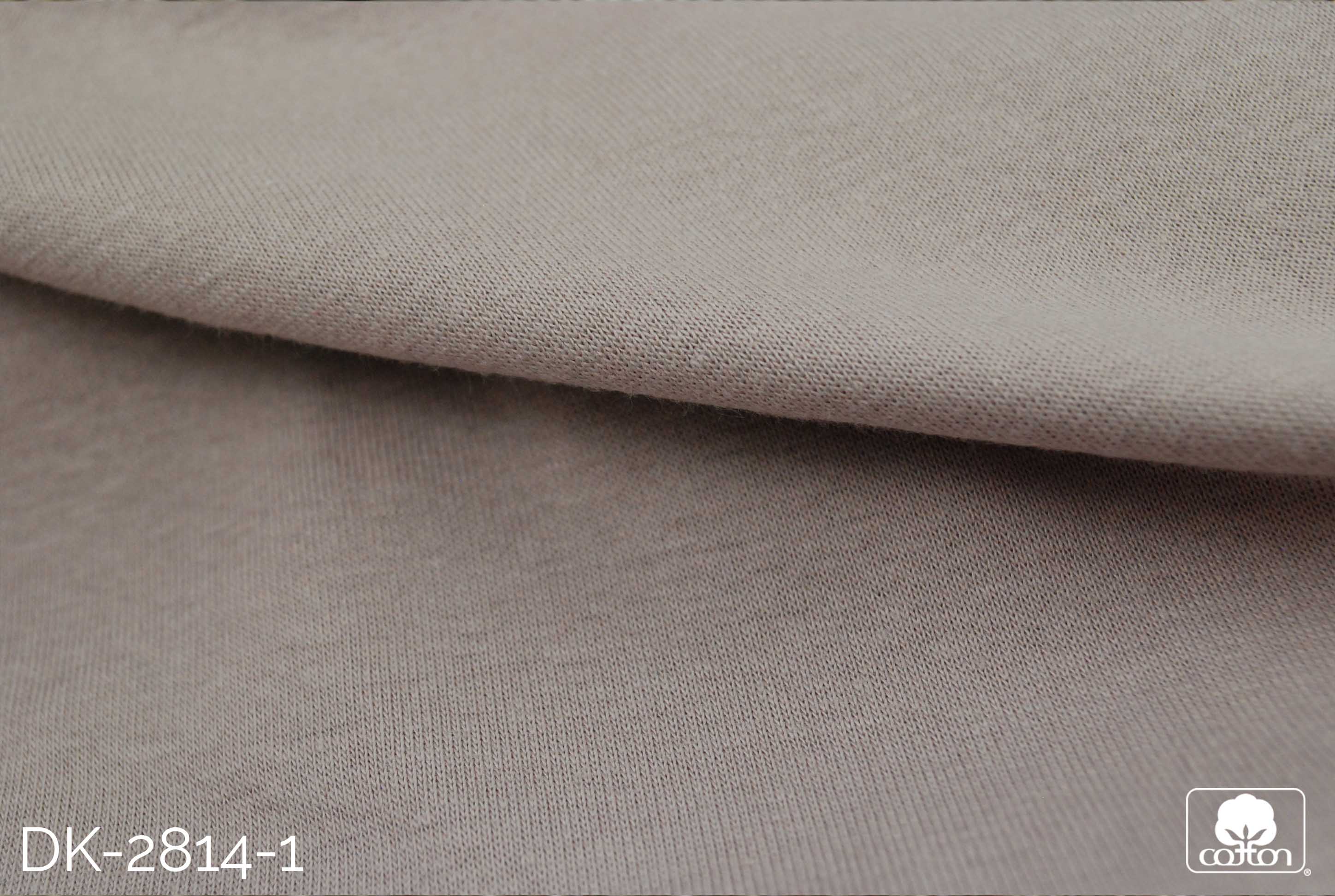
TransDRY® and TOUGH COTTON™ Technologies

FABRIC INSPIRATION.
Here are a few examples of TransDRY® technology from Cotton Incorporated’s licensed suppliers. These are just a sampling of constructions, designs, and fabrics that can be developed for your supply chain.
PRODUCT INSPIRATION.
Cotton Incorporated teamed up with Studio 317, a creative and product development studio, to highlight the TransDRY® technology in a garment collection featuring fabric developments from Cotton Incorporated’s FABRICAST™ collection.
Undercover Base Top: SK 2107-1
SUPPLIERS.
The TransDRY® technology has been adopted by major brands and is commercially available through leading manufacturers around the globe. Contact one of these suppliers to implement TransDRY® technology in your performance apparel line.
[1] Cotton Incorporated’s Lifestyle Monitor™ Survey
[2] CCI & Cotton Incorporated 2016 Activewear Study
[3] McQueen, Dr. Rachel et al. The Retention and
Build-up of Body Odor in Cotton Fabrics: A Field Trial. U of Alberta, 2012
[4] ASTM 06400 (2010), WSP 513.1, WSP 514.1
[5] Li, Lili; Frey, Margaret; Browning, Kristie.
Biodegradability Study on Cotton and Polyester Fabrics. Cornell University, October 2008-September 2009.
[6] Accumulation of Microplastic on Shorelines Worldwide: Sources and Sinks. Mark Anthony Browne, et al. Environmental Science & Technology 2011 45 (21), 9175-9179. DOI: 10.1021/es201811s.
[7] EPA Website: Basic Information on PFAS.

